
Fundamentals
The essence of existence, in every form, pulsates with rhythms. From the celestial dance of sun and moon to the subtle ebb and flow within our very cells, life orchestrates itself through predictable patterns. When we speak of the Circadian Hair Rhythm, we are inviting ourselves to listen to the whisper of these deep, inherent cycles within each strand and follicle.
It is a profound acknowledgment that our hair, like all living things, is not a static adornment but a responsive entity, attuned to the subtle shifts in our inner and outer worlds. This elemental concept, while seemingly modern in its scientific phrasing, echoes the ancient wisdom held by those who knew their hair as an extension of their spirit, their environment, and their lineage.
At its core, the Circadian Hair Rhythm refers to the daily, approximately 24-hour cycle that influences various physiological processes within the hair follicle and strand. Think of it as the hair’s internal clock, a subtle pulsation dictating moments of heightened activity and periods of vital restoration. This rhythm orchestrates cellular regeneration, protein synthesis, and even the hair’s natural inclination to absorb or release moisture.
For textured hair, especially the rich and varied textures found within Black and mixed-race communities, this rhythm carries particular resonance. Centuries of ancestral knowledge, often unwritten yet deeply embodied, observed these very cadences in hair vitality, guiding care rituals and protective stylings that intuitively honored the hair’s cyclical needs.
The Circadian Hair Rhythm is the hair’s innate internal clock, orchestrating its daily physiological processes and mirroring the natural rhythms of life.
Across generations, communities understood that hair responded to the hours of the day and the seasons of the year. While the precise scientific term “circadian” is a contemporary construct, the underlying perception that hair has its own timings for growth, receptivity to moisture, and need for gentle handling is an ancient one. This understanding was often woven into daily grooming practices, seasonal rituals, and even communal gatherings focused on hair care.
It was not a rigid prescription but a fluid partnership, honoring the hair’s natural predispositions. The recognition of hair’s living, breathing quality, shaped by both inner biology and outer influences, stands as a foundational stone in truly meaningful hair wellness, a heritage passed down through hands that understood hair as a sacred conduit.
The hair follicle, a miniature organ residing within the scalp, stands as the orchestrator of hair growth. This follicle experiences its own patterned activity, with gene expression and metabolic rates fluctuating over a 24-hour period. For instance, processes related to cell division in the hair matrix, which determine growth, often show peak activity during certain hours, while repair mechanisms might be more dominant at other times.
Understanding this intrinsic biological blueprint helps clarify why consistency in care practices, aligned with these rhythms, can yield different outcomes for hair health. The very definition of the Circadian Hair Rhythm therefore begins with acknowledging this delicate cellular dance.
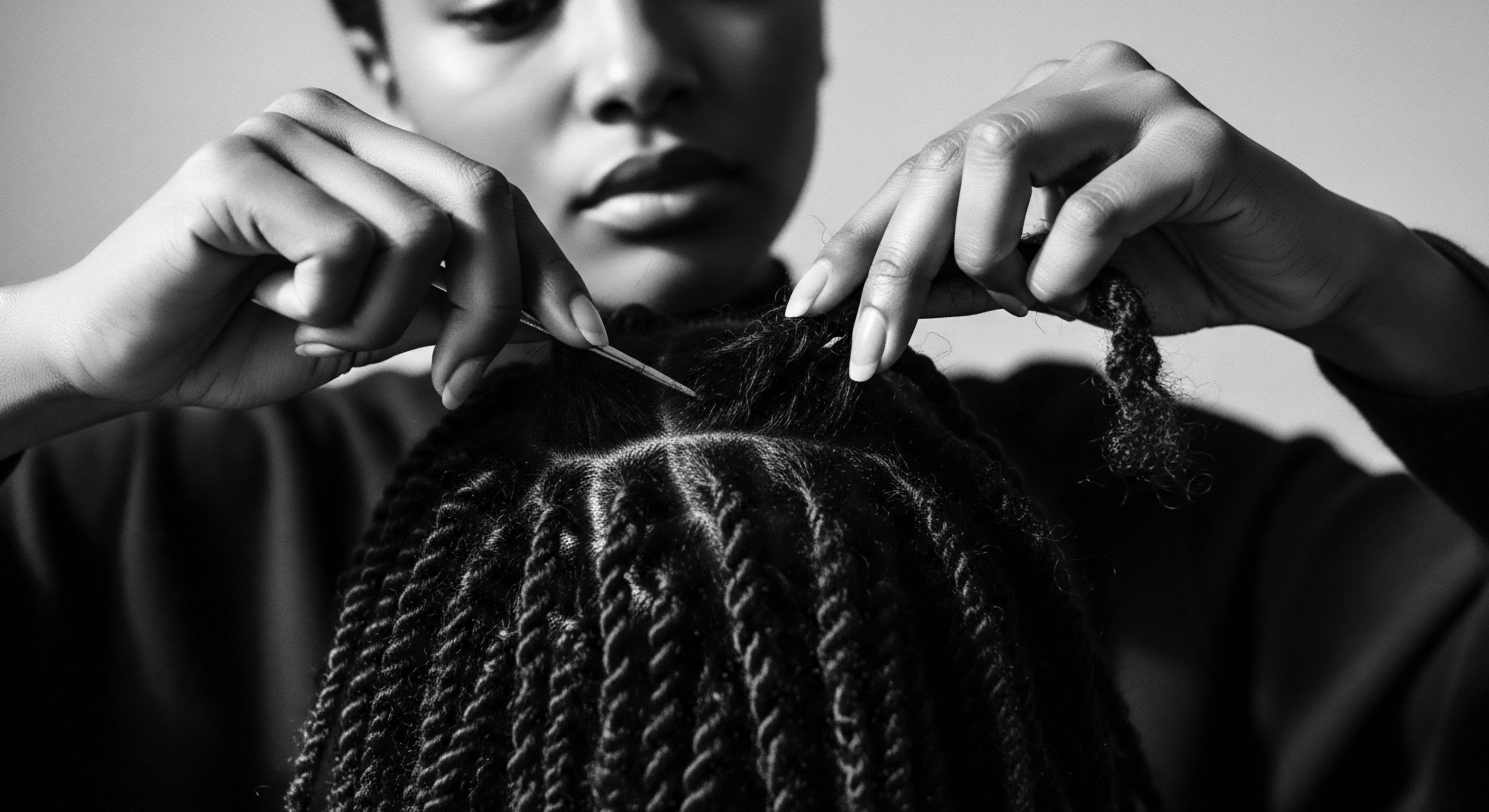
Intermediate
Moving beyond its fundamental understanding, the Circadian Hair Rhythm unfolds into a more nuanced comprehension, revealing the intricate dance between inherent biological timings and the lived experiences of textured hair. This intermediate exploration delves into the scientific underpinnings of hair cycles while consistently framing them within the historical and cultural care practices that have long honored these natural rhythms. The significance of the Circadian Hair Rhythm deepens when considering how ancestral communities, without the aid of modern microscopes, developed sophisticated care systems that intuitively aligned with the hair’s cyclical needs.
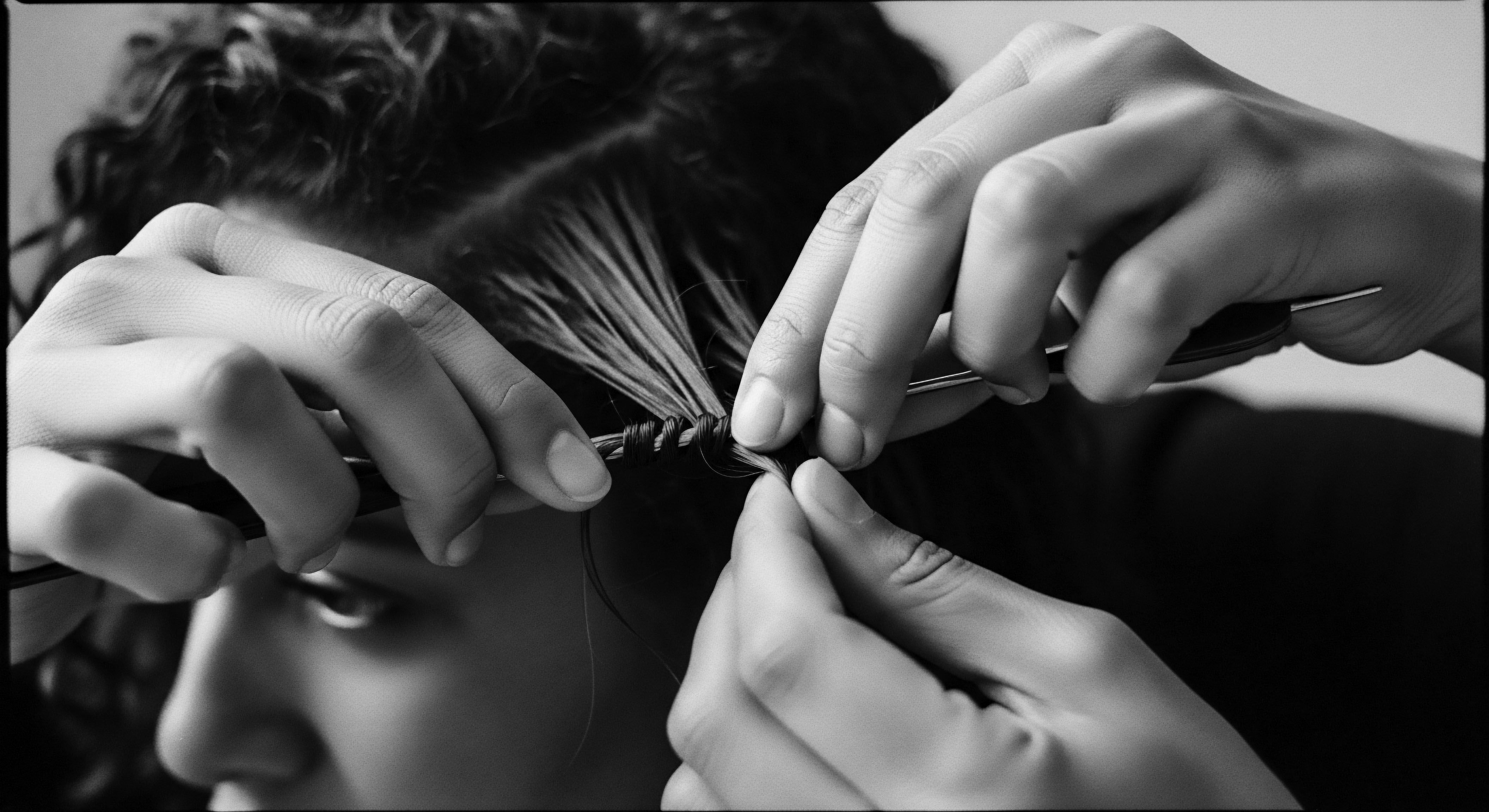
The Phases of Hair and Their Timings
Hair growth does not happen in a continuous, unwavering line; rather, it progresses through distinct phases, a cycle known as the Hair Growth Cycle. These phases are influenced by, and often synchronize with, broader circadian and circannual rhythms.
- Anagen Phase ❉ This is the active growth period, where hair cells divide rapidly, forming new hair strands. It represents the longest phase, spanning from two to seven years. The metabolic activity within the follicle is highest during this time, creating the very fabric of the hair.
- Catagen Phase ❉ A transitional phase, lasting a few weeks, where hair growth ceases, and the follicle prepares for a period of rest. The lower part of the follicle regresses, and the hair detaches from its blood supply.
- Telogen Phase ❉ This is the resting phase, typically lasting two to four months. During this time, the hair strand remains in the follicle but is inactive. New hair begins to form beneath it, preparing to push the old hair out.
- Exogen Phase ❉ Often considered a part of the telogen phase, this is the shedding phase where the old hair strand is released from the follicle, making way for the new growth.
The Circadian Hair Rhythm, a daily oscillation, influences the subtle variations in these phases. For example, metabolic rates within hair follicles, or the rate of sebum production on the scalp, may fluctuate over a 24-hour span. These daily changes, though microscopic, have a cumulative impact on the hair’s vitality and receptivity to care.
Ancestral practices, refined through generations of observation, often mirrored these subtle rhythms. The daily application of specific oils or balms, the timing of communal grooming sessions, or the intuitive understanding of when hair needed rest versus stimulation, were all unwritten guidelines, passed down through touch and tradition, that aligned with the hair’s natural inclinations.

Resonances in Ancestral Care
Consider the meticulous daily practices common in many West African cultures before the disruptions of the transatlantic slave trade. The application of rich, nourishing butters and oils, derived from indigenous plants like Shea (Vitellaria paradoxa) or Mango (Mangifera indica), was not a random act. These daily rituals, often performed in the cool hours of the morning or evening, aligned with the hair’s propensity to absorb moisture and nutrients most effectively during periods of lower environmental stress and optimal physiological function. The communal nature of hair grooming further cemented these rhythms, creating a collective wisdom around the proper timing and methods of care.
Ancestral hair care traditions often mirrored the hair’s natural rhythms, reflecting an intuitive understanding of optimal timings for nourishment and protection.
The very selection of ingredients also speaks to a deep connection with nature’s clock. Plants harvested at particular times, their oils expressed with specific care, were understood to carry a life force most beneficial when applied in harmony with the body’s own natural cycles. This traditional knowledge, while not using terms like “keratinocyte proliferation” or “circadian gene expression,” certainly recognized the observable manifestations of these processes ❉ the hair’s feel, its resilience, and its overall health. The continuous legacy of these practices, adapted and preserved through the diaspora, demonstrates a profound human understanding of the hair’s living essence.
| Aspect of Hair Rhythm Daily Moisture Needs |
| Ancestral Practice (Historical Context) Daily application of plant-derived butters (e.g. Shea, Cocoa), often in morning or evening communal rituals. |
| Contemporary Alignment (Modern Understanding) Morning/evening application of humectant-rich leave-ins and sealants to support daily hydration cycles. |
| Aspect of Hair Rhythm Periodic Cleansing/Renewal |
| Ancestral Practice (Historical Context) Use of natural clays or herbal rinses (e.g. Chebe) for weekly or bi-weekly deep cleansing and fortifying. |
| Contemporary Alignment (Modern Understanding) Routine cleansing (every 1-2 weeks for textured hair) and conditioning to remove buildup and restore hydration. |
| Aspect of Hair Rhythm Resting/Protective Periods |
| Ancestral Practice (Historical Context) Intricate protective styles (braids, cornrows, twists) worn for weeks or months to minimize manipulation and encourage retention. |
| Contemporary Alignment (Modern Understanding) Strategic use of protective styles, minimizing heat and tension, aligning with the telogen phase for hair rest. |
| Aspect of Hair Rhythm These practices, though separated by time and context, share a fundamental respect for the hair's natural life and its inherited patterns. |
The subtle shifts in hair behavior throughout a day, from its morning elasticity to its evening porosity, were not lost on those who lived in close communion with the rhythms of their bodies and the natural world. This level of attunement to hair’s requirements formed the bedrock of hair care systems that continue to resonate with wisdom even today.
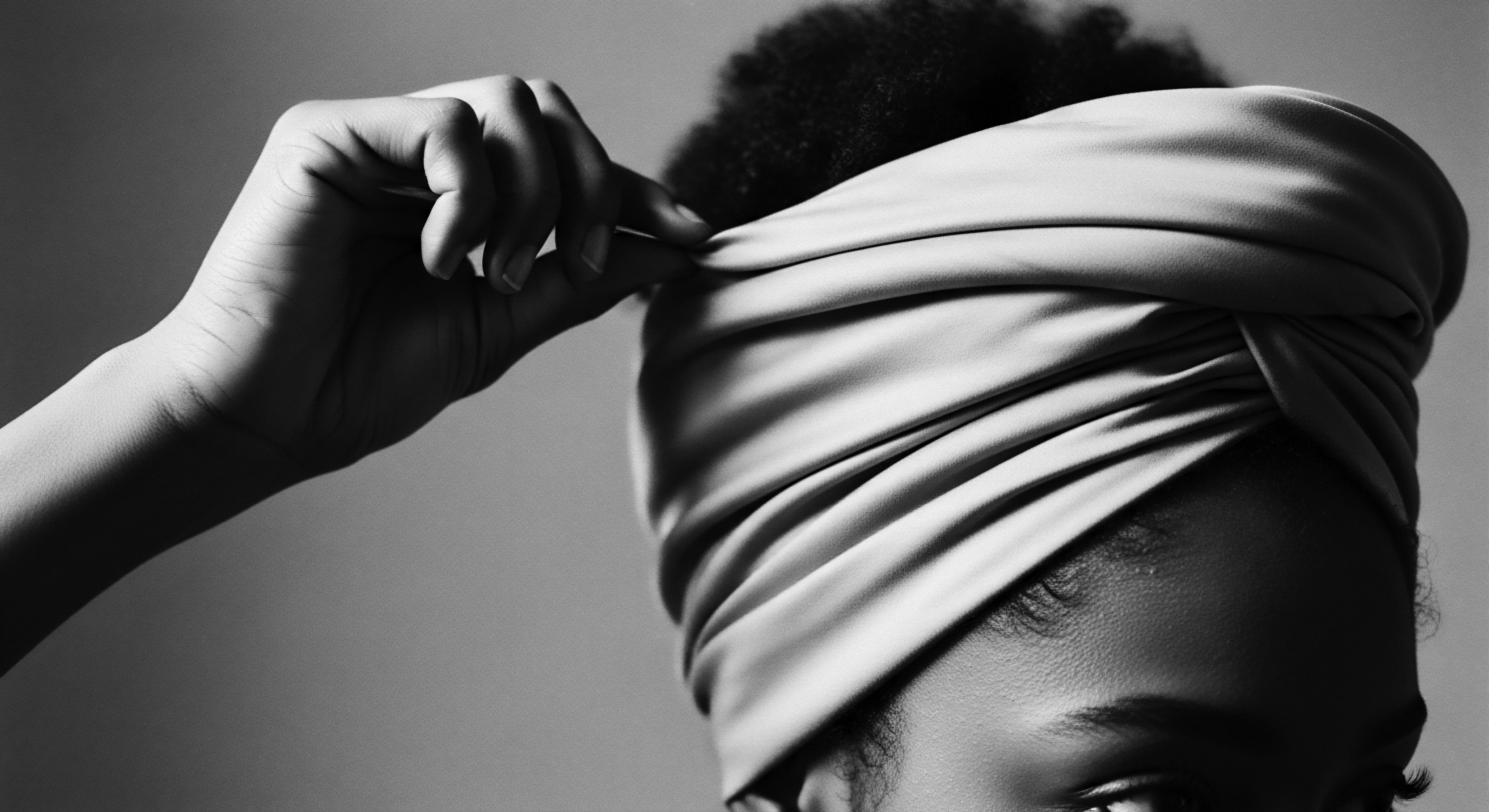
Academic
The rigorous examination of the Circadian Hair Rhythm transcends a simplistic understanding, presenting a multifaceted academic delineation that integrates cellular biology, genetic influences, and deep cultural insights, particularly as they relate to textured hair. This concept, far from being a mere biological curiosity, serves as a crucial lens through which to comprehend hair’s dynamic vitality and its profound connection to ancestral knowledge. The meaning of the Circadian Hair Rhythm, in an academic context, implies the daily, rhythmic oscillation of various cellular and molecular processes within the hair follicle and scalp, driven by intrinsic biological clocks.
These include fluctuations in hair follicle stem cell activity, rates of cell division in the hair matrix, cyclical gene expression linked to hair protein synthesis, and variations in sebum production and scalp microcirculation. It is an intricate, temporally organized system that modulates the hair’s growth, structure, and receptivity to environmental cues and care regimens.
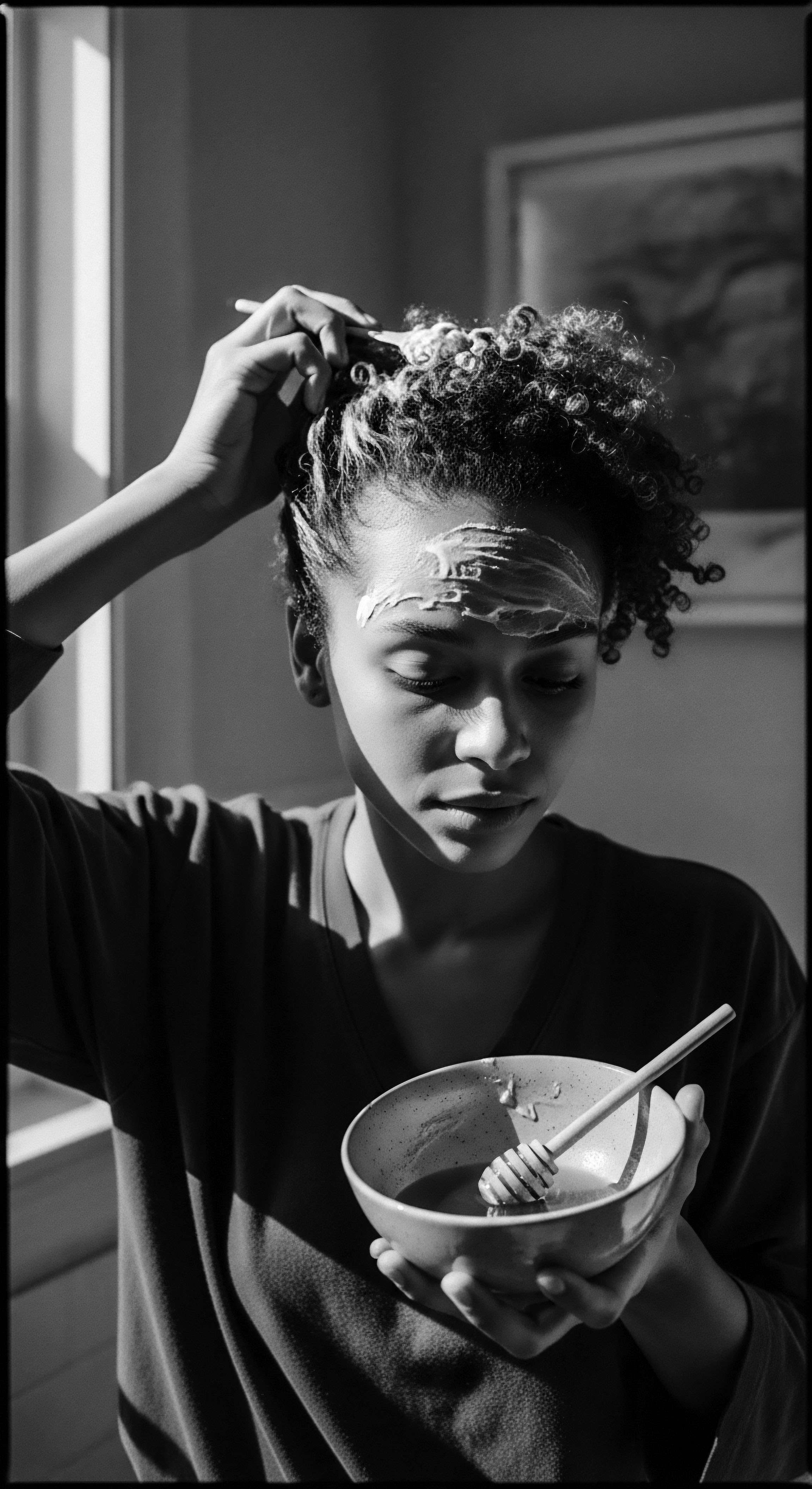
Genomic Whispers and Growth Rhythms
A rigorous exploration of the Circadian Hair Rhythm inevitably leads to the genomics of hair growth, where distinctions across diverse populations stand as a testament to the intricate workings of human biology. A particularly compelling insight emerges from the work of Loussouarn, et al. (2001, 2005), whose studies significantly advanced our understanding of hair growth parameters across different ethnic groups. Their findings revealed that Afro-Textured Hair Exhibits a Slower Growth Rate and a proportionally higher percentage of follicles in the telogen (resting) phase compared to Caucasian hair.
Specifically, Loussouarn et al. (2001) reported an average growth rate of 256 ± 44 μm per day for individuals of African descent, contrasting with 396 ± 55 μm per day for Caucasian hair. Subsequent work by Loussouarn et al. (2005, 2016) further corroborated these distinctions, including Asian hair growing faster than both African and Caucasian hair.
This inherent biological difference in hair cycle dynamics for Afro-textured hair holds immense significance when interpreting historical hair care practices. It suggests that, at a foundational biological level, textured hair is predisposed to different growth patterns and a longer resting phase for a greater proportion of its follicles at any given time. This slower growth rate, coupled with the unique helical structure of Afro-textured hair which makes it prone to breakage if not handled with immense gentleness, provides a scientific grounding for why ancestral practices often centered on retention rather than rapid growth.
The emphasis was not on achieving length at any cost, but on preserving the length already achieved, nurturing the hair through its natural cycles, and protecting it from mechanical stress. The ancestral wisdom of protective styling—braids, twists, cornrows—and minimal manipulation emerges as a deeply intuitive, culturally informed response to the hair’s inherent biological rhythms.
Afro-textured hair’s slower growth rate and higher telogen phase proportion scientifically affirm ancestral practices that prioritized length retention and protective care over rapid growth.
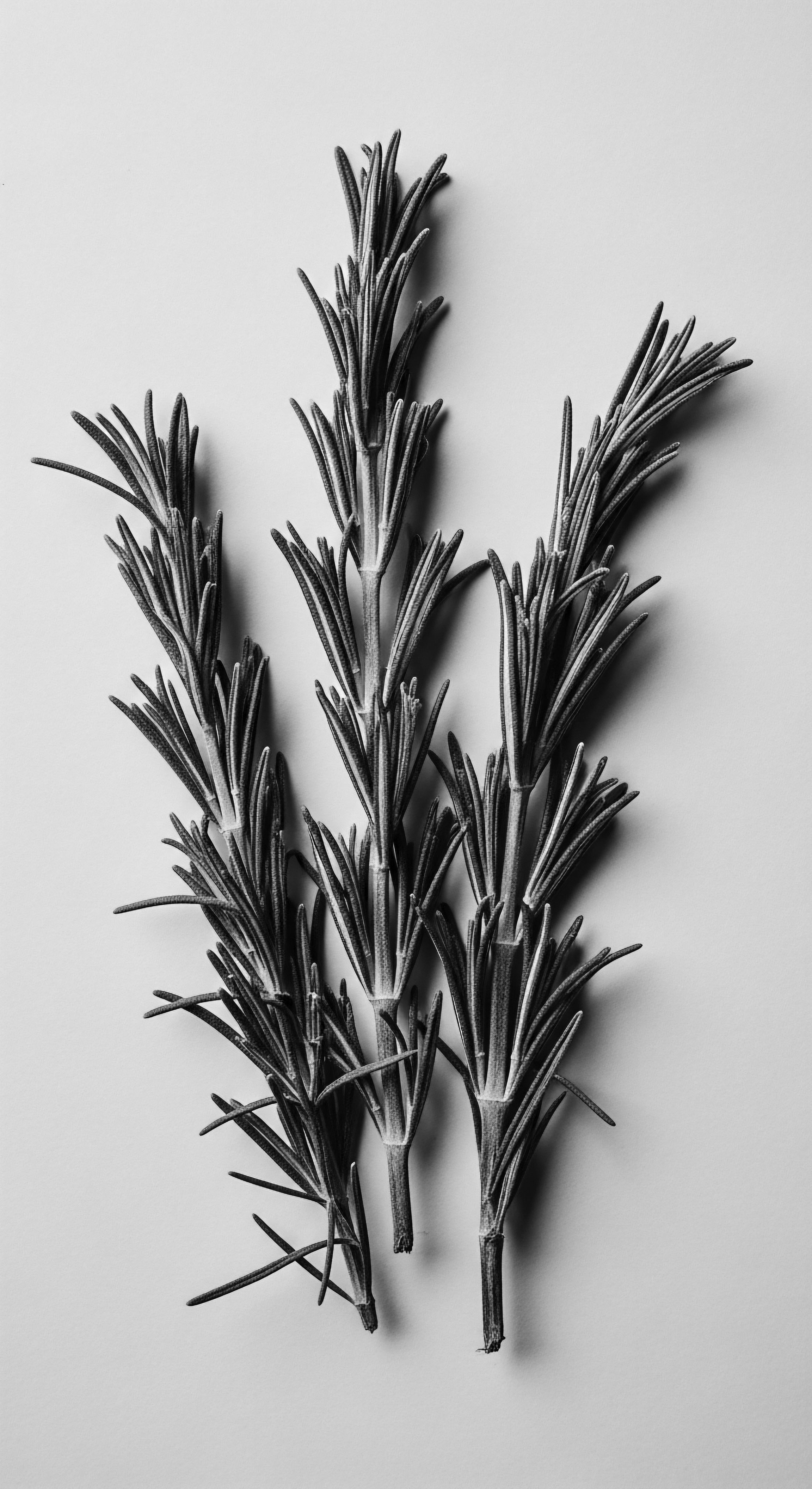
Lunar Cadences and Ancestral Wisdom
Beyond the daily oscillations, the concept of a Circadian Hair Rhythm expands to encompass broader temporal influences, including those of lunar cycles, a practice deeply embedded in many indigenous and Afro-Diasporic traditions. While modern science largely focuses on solar-driven circadian rhythms, ancestral knowledge systems across Africa and the diaspora often recognized the profound influence of the moon on natural processes, including aspects of human vitality and growth. Folktales and traditional practices speak to auspicious times for planting, harvesting, and yes, even hair care, all guided by the lunar phases.
The notion of a “Dark of the Moon trim,” as referenced in some folklore, suggests a deliberate timing of hair cutting to align with the waning moon, believed to promote stronger, healthier regrowth with the increasing light of the new moon. This seemingly mystical practice carries a potent, albeit intuitively understood, alignment with the hair’s natural resting and regenerative periods. In cultures where hair was a spiritual conduit and a marker of identity, family, and social rank, every act of care held significance.
Trimming hair during the moon’s dark phase could be interpreted as a ritualistic shedding of old energy, preparing the follicle for a renewed, robust anagen phase as the lunar cycle waxed. This narrative stands in powerful juxtaposition to a purely linear view of hair growth, demonstrating a holistic ecological perspective where human biology and cosmic rhythms are intrinsically linked.
This integration of lunar cycles into hair care also reflects a profound understanding of natural seasonality. The moon’s influence on tides and plant growth was a tangible reality for agricultural societies, and it is entirely plausible that similar rhythmic patterns were observed in human physiology, including hair. For communities navigating the challenges of forced displacement and adapting to new environments following the transatlantic slave trade, maintaining these rhythmic practices provided continuity and a grounding connection to ancestral lifeways, even when access to traditional ingredients or communal spaces was disrupted. The ingenuity of these communities in preserving and evolving such practices, often subtly embedded within new care routines, speaks volumes about the resilience of inherited wisdom.
- Traditional Hair Cleansing Rhythms ❉ The historical use of natural clays and herbal concoctions for cleansing was often performed at specific intervals, acknowledging the scalp’s need for periodic detoxification and revitalization, rather than daily stripping.
- Protective Styling Cycles ❉ Intricate braiding and wrapping techniques were not merely aesthetic. Their longevity provided extended periods of rest for the hair and scalp, aligning with the slower growth and longer telogen phases characteristic of textured hair, thereby aiding in length retention.
- Nutrient Application Timings ❉ The application of nourishing plant oils and butters was often a daily or regular occurrence, particularly during certain periods of the day, reflecting an intuitive understanding of when the hair was most receptive to deep conditioning.
- Ritualistic Hair Trimming ❉ Beyond practical maintenance, the timing of hair trims, sometimes aligned with lunar cycles or significant life events, represented a spiritual acknowledgement of hair’s cyclical nature and its connection to renewal and release.

Interconnected Incidences and Long-Term Consequences
The disruption of these ancestral practices, particularly through the Middle Passage and subsequent systems of enslavement and colonialism, had profound and long-term consequences, not only for the physical health of Black and mixed-race hair but also for the transmission of this rhythmic knowledge. Forced labor and the brutal conditions of slavery often precluded the meticulous, time-consuming care rituals that honored the Circadian Hair Rhythm. Hair was often shaved, neglected, or subjected to harsh, damaging treatments in attempts to conform to alien beauty standards. This historical trauma severed immediate access to the intricate, generationally accumulated wisdom of hair care, including the intuitive understanding of its natural rhythms.
The legacy of this disruption continues to influence modern hair care perceptions within Black and mixed-race communities. A collective memory of hair as “difficult” or “unmanageable” arose, often divorced from the understanding of its inherent biological needs and rhythms. Yet, resilience prevailed. Through hidden practices, quiet perseverance, and the re-emergence of natural hair movements, many elements of this ancestral knowledge, including a respect for the hair’s intrinsic timings, have resurfaced.
The contemporary embrace of “listening to your hair” or “co-washing” rather than daily shampooing, for instance, can be seen as a modern re-discovery of these deep-seated rhythms and the hair’s need for moisture retention, which ancestral practices had long recognized. The academic understanding of the Circadian Hair Rhythm therefore serves to validate and illuminate the sophisticated, ecologically attuned practices of the past, offering a pathway for true hair wellness rooted in both scientific clarity and cultural reverence.
The hair itself, in its myriad of textures, remains a living archive. Its helical formations, its resilience, and its innate responses to care speak a language understood by those who are willing to listen. The Circadian Hair Rhythm provides a framework for this listening, allowing us to align our care not with fleeting trends, but with the ancient, enduring wisdom encoded within every strand, a testament to its heritage and its inherent life.

Reflection on the Heritage of Circadian Hair Rhythm
The journey through the intricate landscape of the Circadian Hair Rhythm culminates not in a final destination, but in a profound reflection on its enduring significance, particularly for textured hair and its vibrant communities. This rhythm, a pulsating echo from the very source of life, reveals itself not as a rigid scientific decree but as a sacred melody, long sung by ancestral voices and now gently re-discovered in the hum of modern understanding. It reminds us that our hair is more than a biological structure; it is a living extension of our lineage, carrying the wisdom of generations who intimately knew the language of the earth and sky.
In the gentle sway of ancestral practices, we find evidence of a profound attunement to hair’s natural ebb and flow. The careful crafting of protective styles, the selection of indigenous botanicals at their peak potency, the communal rituals of grooming under the moonlit sky – these were not random acts. They were deliberate conversations with the hair’s inherent timings, a dance of care that respected its need for rest, its moments of growth, and its longing for nurturing. This heritage, though sometimes fractured by the harsh winds of history, has persisted, a resilient root system pushing through arid ground, blooming anew in each generation that seeks to understand and honor their hair’s deep story.
To grasp the Circadian Hair Rhythm for textured hair, then, is to grasp a piece of ourselves. It is to acknowledge that the wisdom of those who came before us holds tangible lessons for our wellness today. It is to feel the delicate connection between the biological rhythms pulsating within our follicles and the ancient lore that recognized the moon’s pull on our vitality.
In this space, science and spirituality hold hands, revealing a truth that is both deeply personal and universally resonant ❉ hair, in its cyclical existence, calls for a care that mirrors the rhythmic beauty of life itself. As we continue to seek balance and harmony in our modern lives, the timeless wisdom embedded in the Circadian Hair Rhythm offers a guiding light, inviting us to listen to the soul of every strand, a whispered legacy of resilience and beauty.
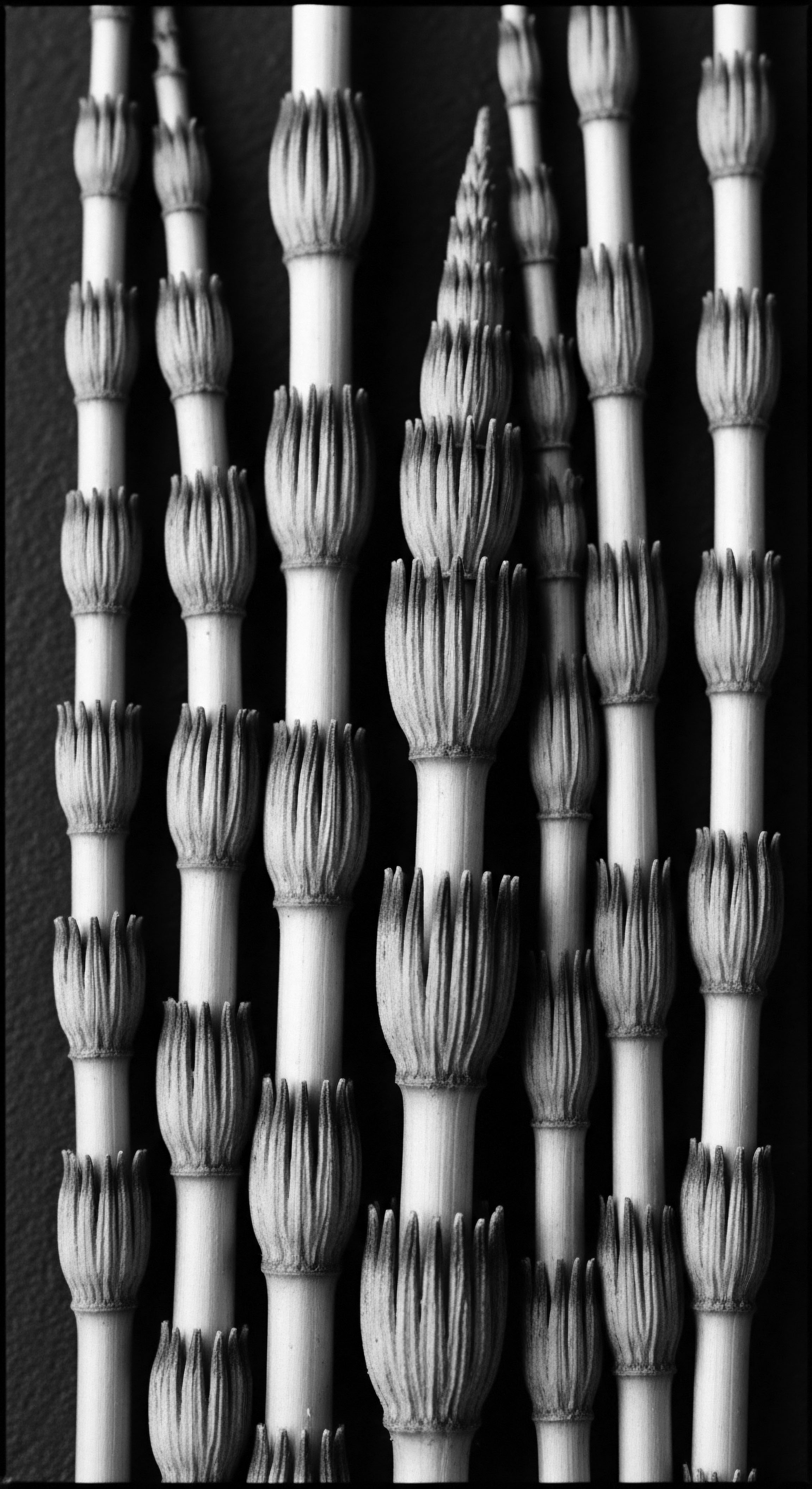
References
- Loussouarn, Genevieve. African Hair ❉ Hair Growth Parameters. Journal of Investigative Dermatology, 2001.
- Loussouarn, Genevieve. Diversity of Human Hair Growth. International Journal of Dermatology, 2005.
- Byrd, Ayana. Hair Story ❉ Untangling the Roots of Black Hair in America. St. Martin’s Press, 2001.
- Mercer, Kobena. Hair Story. The MIT Press, 2001.
- Walker, Lisa. The Black Hair Handbook ❉ A Guide to Natural Hair Care for Black Women. Simon & Schuster, 2009.
- Thrasher, Susan. Hair Culture and the Social Construction of Race. Duke University Press, 2003.
- Banks, Ingrid. Hair Matters ❉ Beauty, Power, and Black Women’s Consciousness. New York University Press, 2000.
- Akbar, Na’im. Chains and Images of Psychological Slavery. New Mind Productions, 1996.
- Carney, Judith A. Black Rice ❉ The African Origins of Rice Cultivation in the Americas. Harvard University Press, 2001.
- Hooks, Bell. Black Looks ❉ Race and Representation. South End Press, 1992.
